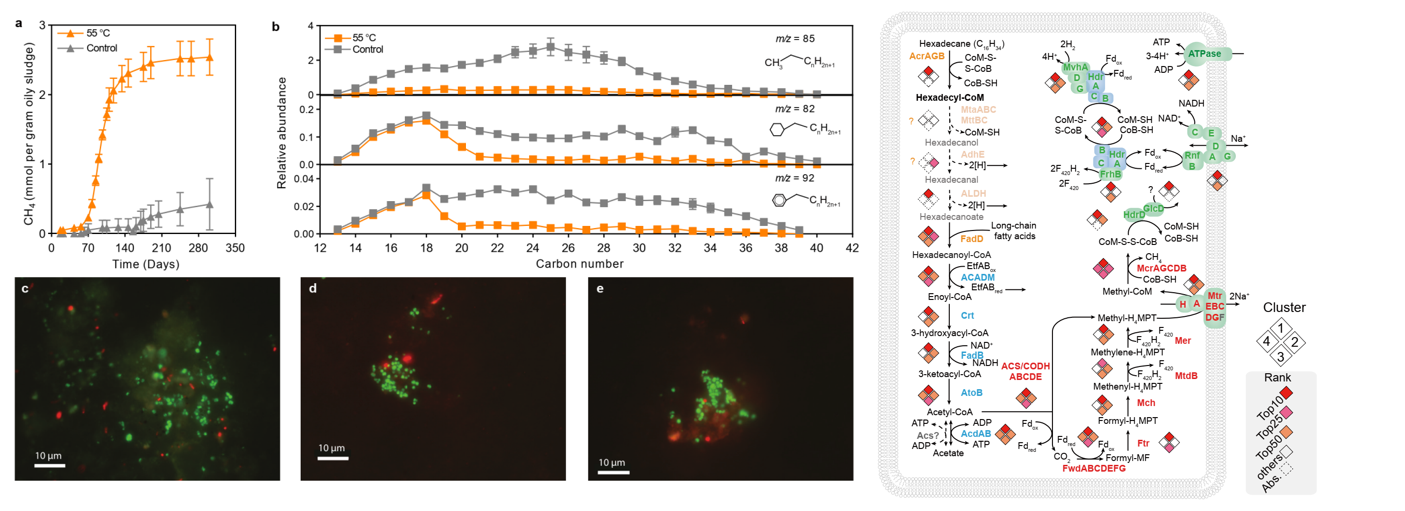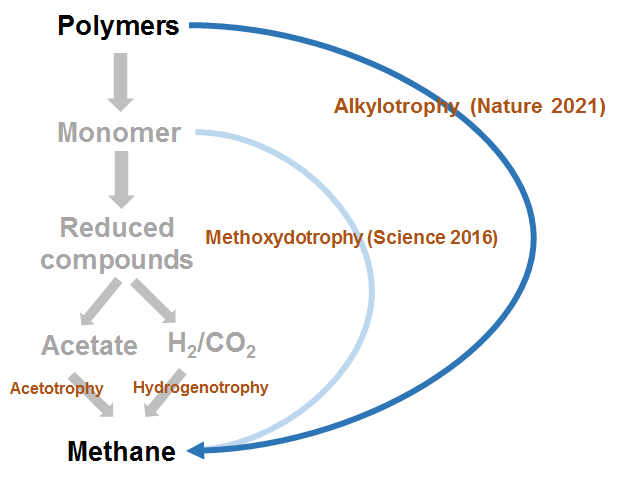Research
Latest BIOMA research published in Nature: Non-syntrophic methanogenic hydrocarbon degradation by an archaeal species
On December 23 Beijing time, the scientific journal Nature published an article from BIOMA’s Innovation Team on Energy Microbiology. The team found that without relying on the syntrophic partnerships of hydrocarbon-degrading bacteria, the methanogenic archaeon ‘Candidatus Methanoliparum’ alone can combine the degradation of long-chain alkanes with methanogenesis to degrade oil hydrocarbons. The study is completed with cooperation with Shenzhen University, Germany's Max Planck Institute of Marine Microbiology, and Sinopec Microbial Oil Recovery Key Laboratory and other units.

Methanogenic archaea are the earliest type of prokaryotic microorganisms from the origin of life on earth. They are the main contributors to global atmospheric methane emissions and the key functional microorganisms for the degradation of organic matter in anoxic environment to produce methane (commonly known as biogas fermentation). The past view believed that this archaea can only produce methane through four ways: acetic acid fermentation, CO2 reduction, methyl splitting and oxygen methyl conversion.
Through stable carbon isotope labeling culture, metagenomic and macrotranscriptome sequencing, and high-resolution mass spectrometry , the study confirmed that Ca. Methanoliparum can directly oxidize long-chain alkyl hydrocarbons and enter the methanogenesis metabolism through β-oxidation and Wood-Ljungdahl pathway, without the need for the syntrophic partnerships of hydrocarbon-degrading bacteria, thus proposing the fifth methane production pathway. This research has perfected the biogeochemical process of the carbon cycle and laid a scientific foundation for the exploitation of residual crude oil in depleted oil reservoirs through the biogas form ("underground biogas plants").

The study was funded by the National Natural Science Foundation of China, the Science and Technology Innovation Project of the Chinese Academy of Agricultural Sciences, and the special fund for basic scientific research operations of central level research institutes for public welfare.
Link to the paper: https://www.nature.com/articles/s41586-021-04235-2.

